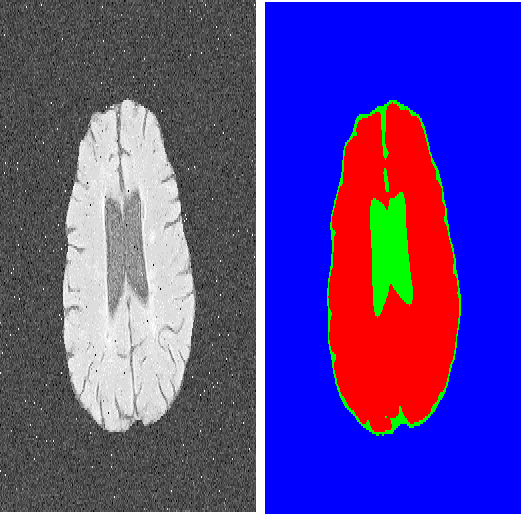We present Sauron, a filter pruning method that eliminates redundant feature maps by discarding the corresponding filters with automatically-adjusted layer-specific thresholds. Furthermore, Sauron minimizes a regularization term that, as we show with various metrics, promotes the formation of feature maps clusters. In contrast to most filter pruning methods, Sauron is single-phase, similarly to typical neural network optimization, requiring fewer hyperparameters and design decisions. Additionally, unlike other cluster-based approaches, our method does not require pre-selecting the number of clusters, which is non-trivial to determine and varies across layers. We evaluated Sauron and three state-of-the-art filter pruning methods on three medical image segmentation tasks. This is an area where filter pruning has received little attention and where it can help building efficient models for medical grade computers that cannot use cloud services due to privacy considerations. Sauron achieved models with higher performance and pruning rate than the competing pruning methods. Additionally, since Sauron removes filters during training, its optimization accelerated over time. Finally, we show that the feature maps of a Sauron-pruned model were highly interpretable. The Sauron code is publicly available at https://github.com/jmlipman/SauronUNet.
翻译:我们展示了Sauron, 这是一种过滤处理方法,它通过丢弃具有自动调整层特定阈值的相应过滤器,来消除冗余的地貌地图。 此外,Sauron将一个正规化术语最小化,正如我们用各种度量显示的那样,它能促进地貌地图群的形成。与大多数过滤处理方法不同,Sauron是一个单一阶段,类似于典型的神经网络优化,需要较少的超光度和设计决定。此外,与其他基于集束的方法不同,我们的方法并不要求预先选择组群的数量,而该组群是非三重决定和不同层次的。此外,我们评估了Sauron和三个先进的过滤过滤器运行方法,这三项医学图像区段任务都是我们展示了Sauron和三个最先进的筛选方法。这个区域,过滤器运行没有多少人注意,而且它可以帮助为医学级计算机建立高效模型,而由于隐私考虑而不能使用云层服务。Sauron达到的性能和运行率比竞争性的纯度高的模型。此外,由于Sauron删除过滤器在训练期间, 其优化会加快时间。我们展示了它。我们展示了Saujurampon- surverout-s的地图模型。我们展示了可公开的地图图。




